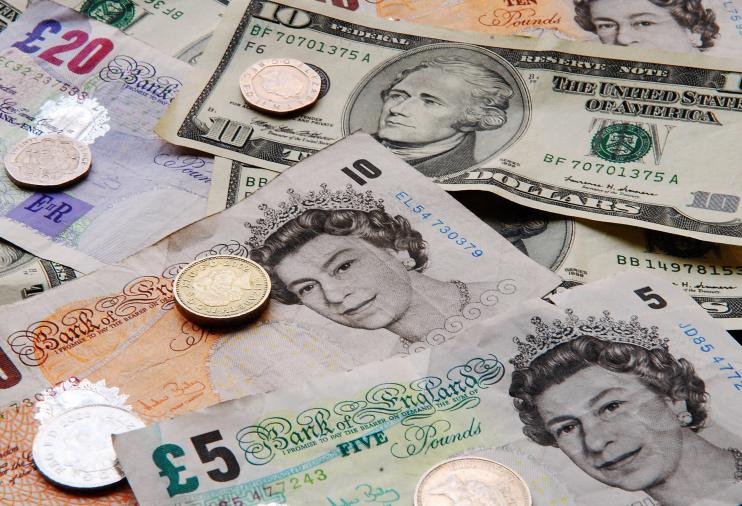
How are the central banks battling coronavirus?

As countries ramp up efforts to control the pandemic, the economic impact of Covid-19 is having an impact on currency values
As the reality of the pandemic begins to bite, it’s clear that normal rules no longer apply. Economies across the world are plummeting and governments are scrambling to protect as much as they can of the economy and to ensure people are supported through such challenging times. Central banks have also stepped up to the plate with a swathe of fiscal measures designed to keep the economy moving, even while countries are grinding to a halt.
What actions are central banks taking?
The approach isn’t uniform. In general, the two key measures have been cutting interest rates to the bone to support greater lending and government purchasing and quantitative easing fiscal measures in order to boost the economy. Different banks have taken different approaches for a variety of reasons, including the state of the economy and the position they were in when the pandemic hit. For example, the European Central Bank (ECB) had already cut rates to historic lows prior to the crisis, which meant that they had less room for manoeuvre compared to other central banks that had more scope to make significant cuts.
The ECB has been criticised for the fact that the €750bn Pandemic Emergency Purchase Programme was delivered later than other central banks, but it seems to reflect the additional complexity for a central currency which applies for various national governments. In contrast, the Bank of England (BoE), the US Federal Reserve or the Bank of Japan can work in concert with individual governments, as when the BoE delivered a second surprise rate cut the same day the Chancellor announced the first phase of measures to support businesses in the budget.
What impact does this have on currency values?
Interest rates are a key mover of currency values because of the implications for inflation and money supply. In general, a cut in interest rates suggests inflationary pressures which push the currency lower, a rise in interest rates has positive implications for a country’s GDP which pushes the currency higher. At the moment, it’s not business as usual. Partly this is because central banks are all reacting at the same time, effectively cancelling each other out. In addition, investors are viewing all the actions of central banks through the lens of the pandemic. This means that rate cuts which in normal times would be a significant market mover are being shrugged off – falls in GDP are expected at this time and the cuts rarely come as a surprise.
Why does the US Federal Reserve have a wider influence?
The actions of the US Federal Reserve have a further reaching impact on currency markets due to the size of the country’s economy and the implications for global financial markets. As well as influencing the value of the US Dollar, this means that equity prices, stocks and more can all be affected by a change. Commodity-based currencies such as the Australian and Canadian dollars, for example, maybe effected by a change in US interest rates. It’s not only interest rates that have this impact on currency values, other actions of the Fed can also cause a ripple effect for other currencies. For example, after the Fed announced plans to buy government-backed debt recently, there was a brief burst of optimism in global financial markets and this, in turn, allowed the Australian dollar to make gains. While the normal rules may not entirely apply when it comes to the actions of central banks and respective currency values, it’s clear that they still have some influence.
The currency market is experiencing significant volatility because of the pandemic, and currency values are being placed under pressure as much by the spread of the virus as they are by more traditional measures such as the actions of central banks. The actions of the US Federal Reserve have a further reaching impact on currency markets due to the size of the country’s economy and the implications for global financial markets. As well as influencing the value of the US Dollar, this means that equity prices, stocks and more can all be affected by a change. Commodity-based currencies such as the Australian and Canadian dollars, for example, maybe effected by a change in US interest rates. It’s not only interest rates that have this impact on currency values, other actions of the Fed can also cause a ripple effect for other currencies. For example, after the Fed announced plans to buy government-backed debt recently, there was a brief burst of optimism in global financial markets and this, in turn, allowed the Australian dollar to make gains.
A currency exchange specialist like moneycorp can provide expert guidance on the markets. That’s why we recommend moneycorp, for an international payments account that provides access to:
- Great rates on more than 120+ currencies over the phone and 33 currencies online
- The convenient online platform and a mobile app to manage payments 24/7
- Competitive pricing giving you access to 18+ liquidity providers
- Tools to track, target and even fix exchange rates for major payments
- Free expert guidance and support from a team of specialists based in the UK
Sign up for a free moneycorp account today